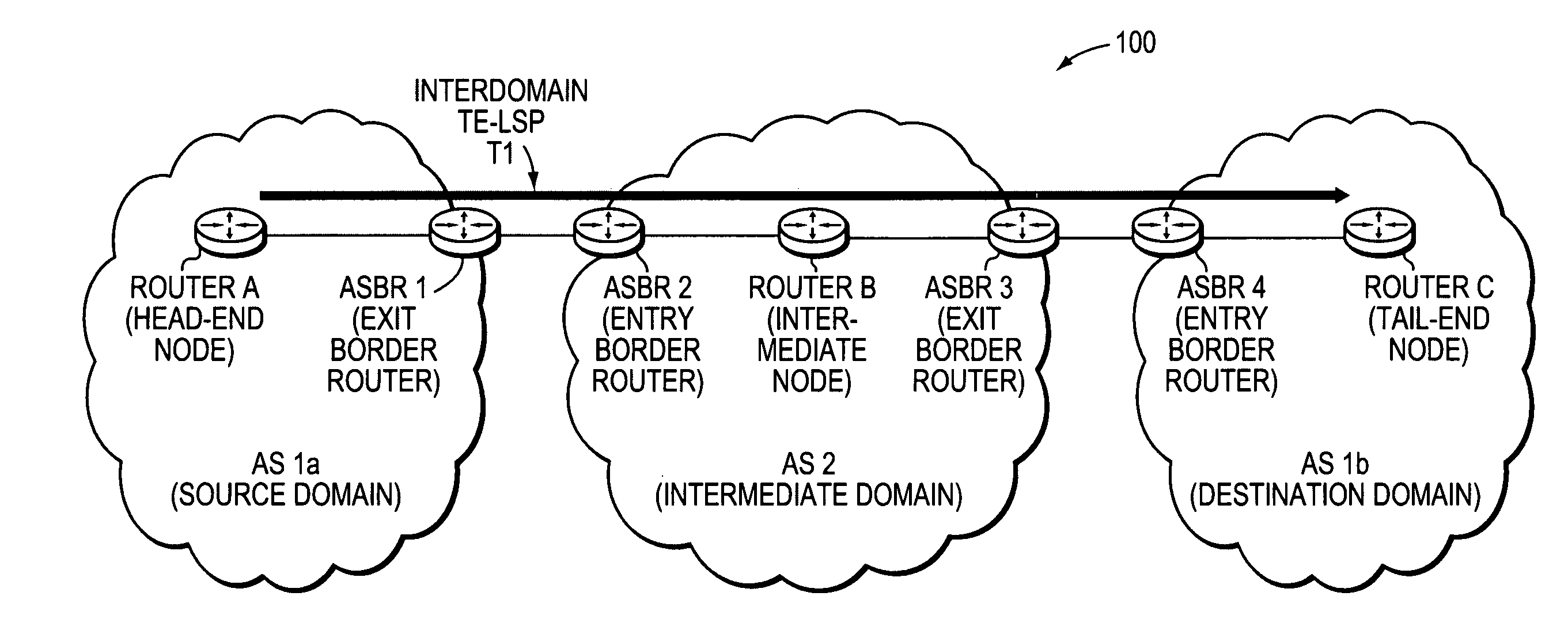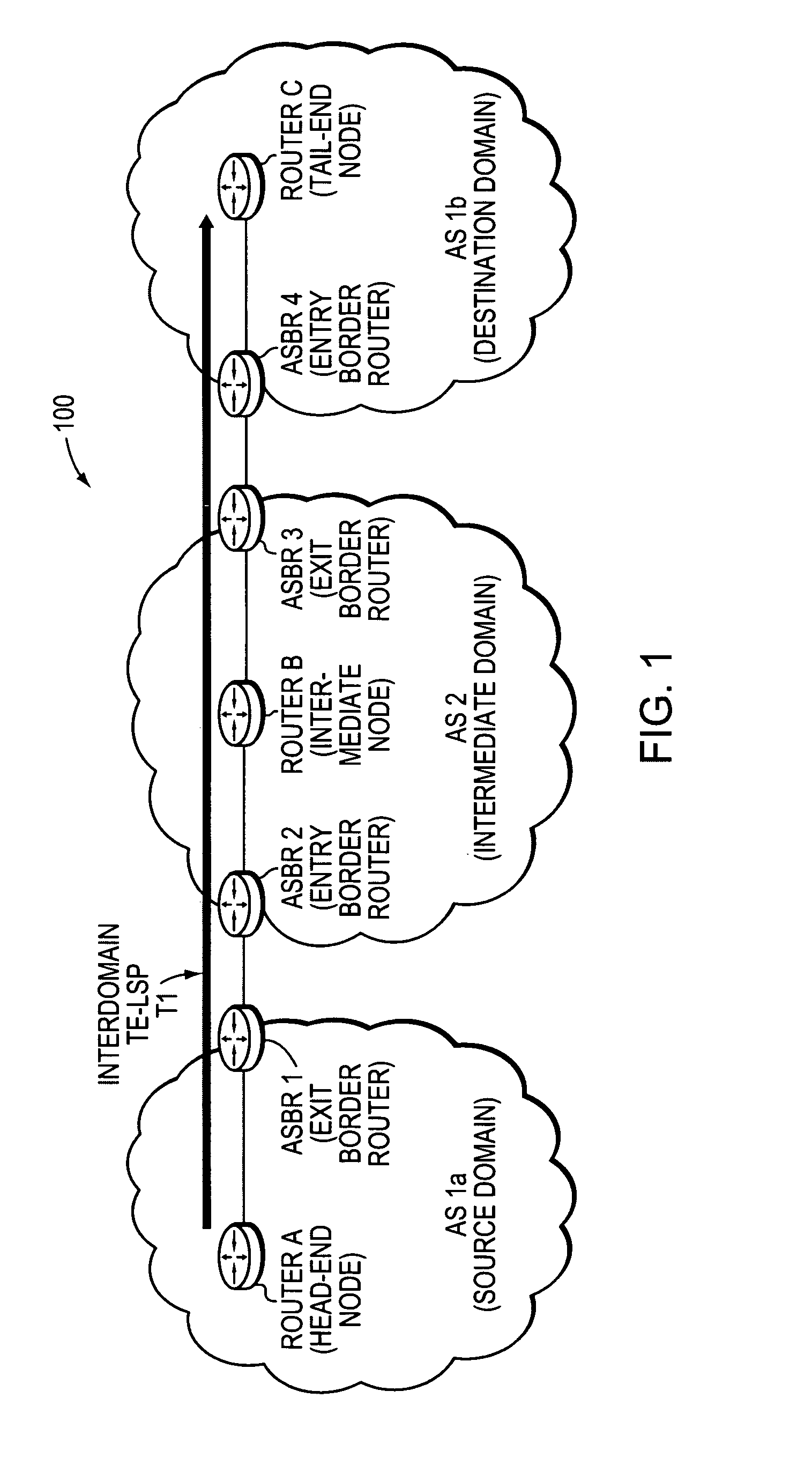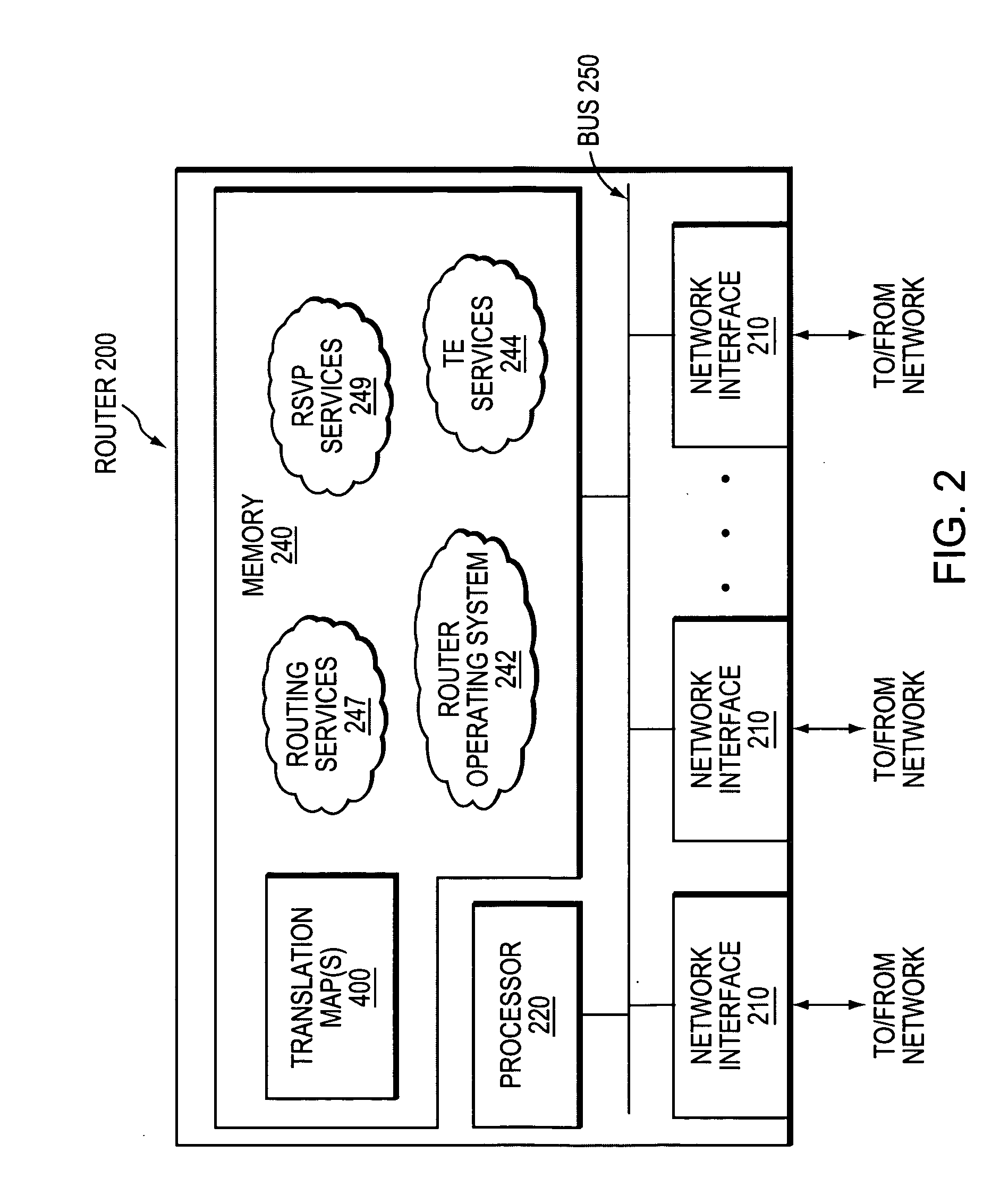Technique for dynamically restoring original TE-LSP attributes for interdomain TE-LSPs
a dynamic restoration and attribute technology, applied in the field of computer networks, can solve the problems of cumbersome manual configuration of te-lsp attributes, inability to properly interpret translated ranges, and inability to restore original attributes, etc., and achieve the effect of restoring original attributes
- Summary
- Abstract
- Description
- Claims
- Application Information
AI Technical Summary
Benefits of technology
Problems solved by technology
Method used
Image
Examples
Embodiment Construction
[0033]FIG. 1 is a schematic block diagram of an exemplary computer network 100 comprising domain AS2 (e.g., an Autonomous System), which interconnects a plurality of other domains, AS1a and AS1b, e.g., different portions of an AS1. An Autonomous System (AS) is herein defined to be a group of intermediate nodes, such as intradomain routers, within a network that are subject to a common authority and execute one or more intradomain routing protocols. Although each domain is illustratively an autonomous system, those skilled in the art will appreciate that the domains may alternatively be configured as routing domains or other networks or subnetworks. The domain AS1a includes intradomain routers such as border router ASBR1 through which communication, such as data packets, may pass into and out of the domain to border router ASBR2 of AS2. AS2 also includes border router ASBR3 in communication with border router ASBR4 of AS1b. Moreover, within AS1a, AS2, and AS1b, there are exemplary in...
PUM
 Login to View More
Login to View More Abstract
Description
Claims
Application Information
 Login to View More
Login to View More - R&D
- Intellectual Property
- Life Sciences
- Materials
- Tech Scout
- Unparalleled Data Quality
- Higher Quality Content
- 60% Fewer Hallucinations
Browse by: Latest US Patents, China's latest patents, Technical Efficacy Thesaurus, Application Domain, Technology Topic, Popular Technical Reports.
© 2025 PatSnap. All rights reserved.Legal|Privacy policy|Modern Slavery Act Transparency Statement|Sitemap|About US| Contact US: help@patsnap.com



